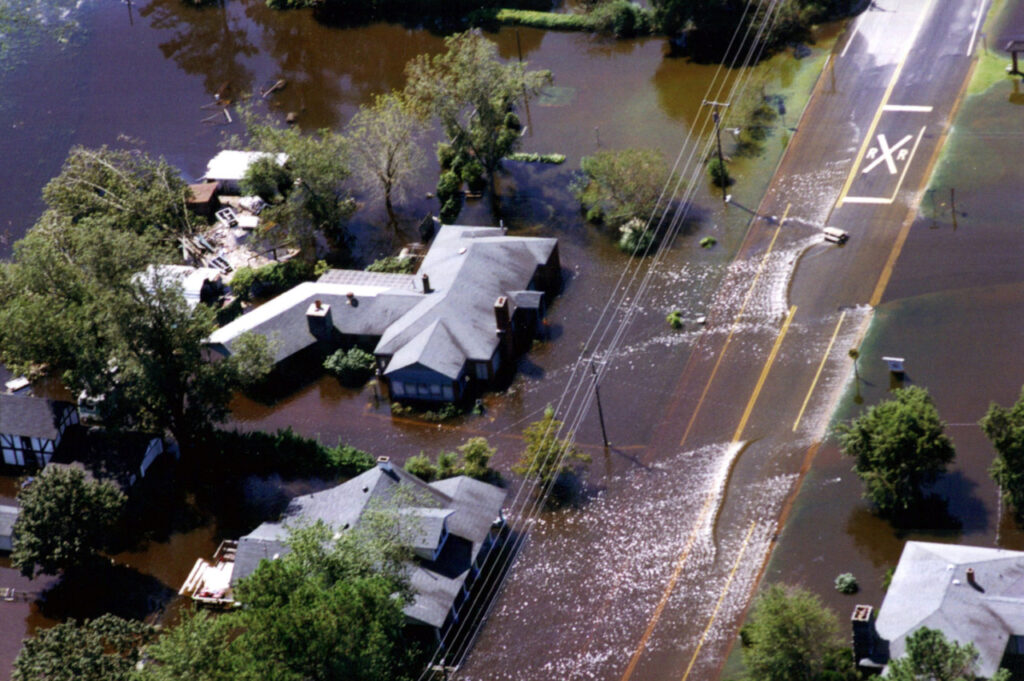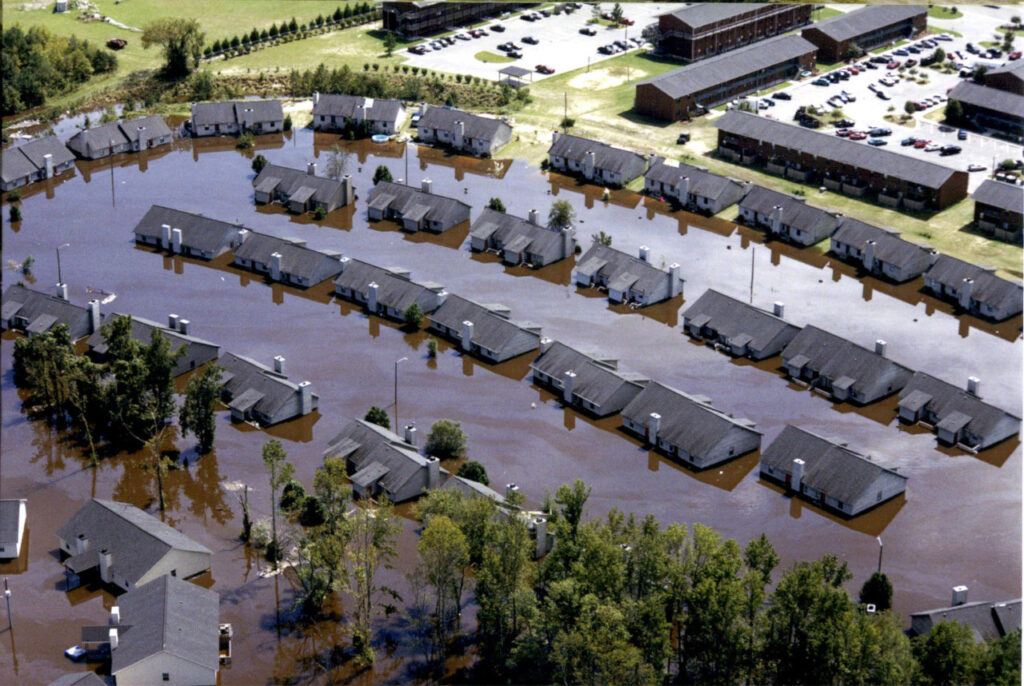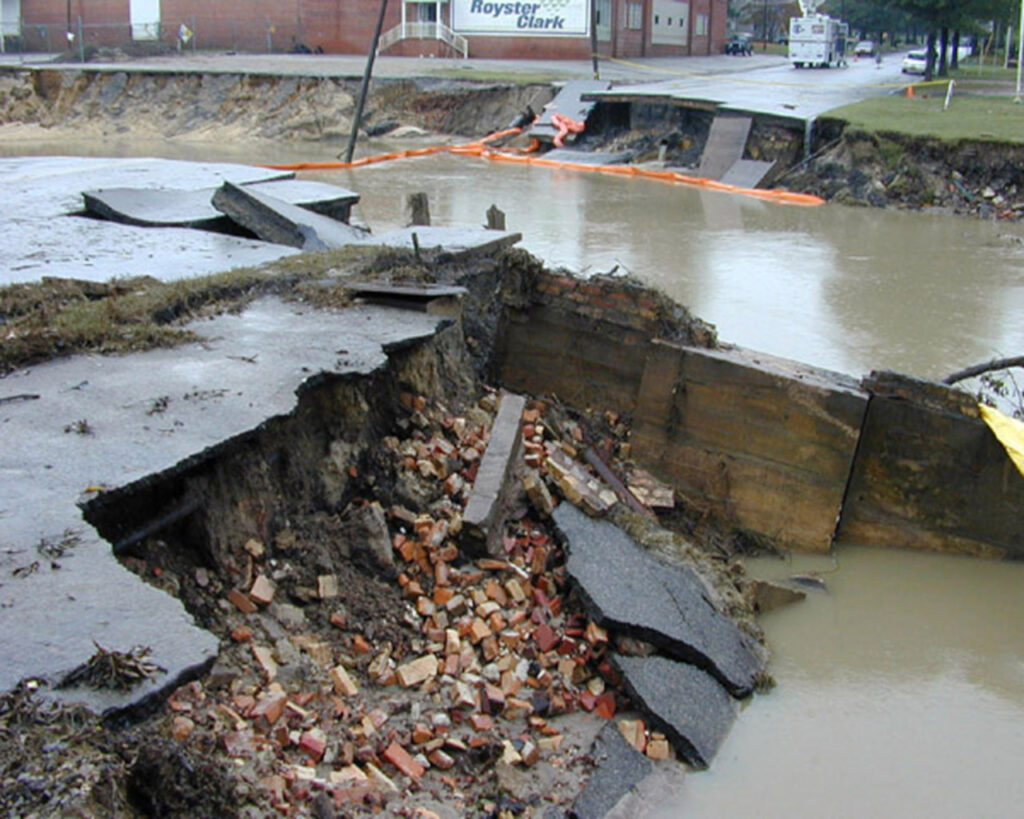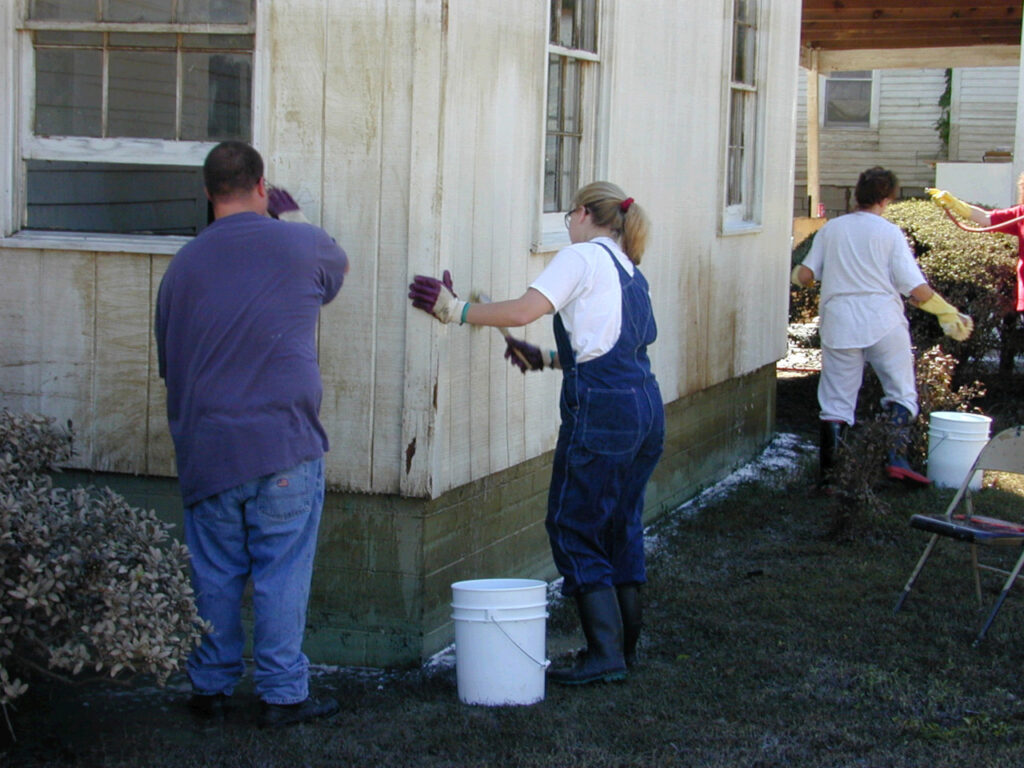Rob Lipford knew it was an unusual event when even the water in his yard was seeking higher ground.
At his home in Rocky Mount, the low-lying backyard always tended to fill up first during a heavy rain event. But when several inches of water began creeping around the side of his house toward the front, it caught him by surprise.
“I do remember at some point watching that water piling up in the backyard was flowing toward the street, and I had never seen that before,” said Lipford, a staff forester who has been with the North Carolina Forest Service for the past 28 years.

When Hurricane Floyd hit in 1999, Lipford had just started a new job in Rocky Mount as a water quality forester. His duties included monitoring logging sites to ensure they were meeting water quality standards.
While water of a different kind — the floods from Floyd in his backyard and beyond — soon became Lipford’s focus, he recalls that the main concern in the days before the one-time Category-4 storm hit the coast was the potential wind damage.
“We were kind of reeling from Hurricane Fran in 1996,” he said. “It was a wind event. We were expecting a huge wind event [in Floyd] that was going to blow everything down. A lot of us had been through other hurricanes but that had been the most recent and the most devastating in a while.”
A Different Kind of Damage
As Floyd weakened on its way to North Carolina’s southern coast, Lipford and his neighbors breathed a sigh of relief.
“It felt like we were dodging a bullet in the beginning because it wasn’t going to be like Fran was.”
Indeed it wasn’t, as Lipford realized during the storm.
“The wind was definitely less than Fran, but the rain was torrential,” he said.
In Rocky Mount, 18 inches of rain fell over three days, and when he ventured out after the storm, he realized how bad the flooding was even within earshot of his own home.

“I go pick up a friend of mine that’s a couple blocks away and we realize we’re stuck. The water is completely encircling the neighborhood.”
Sitting northwest of Tarboro, Princeville, and Greenville, the city of Rocky Mount was the among the first places to see the Tar River rise, and Lipford found an ominous sign in his town of what awaited those farther downstream.
“At the bridge over the Tar River, the water was rising and it was already within a couple feet of the bridge,” he said. “It was obvious that if it came up any more, it would flow over the bridge.”
The river rose to major flood stage in at the NC97 bridge in Rocky Mount, cresting at 31.66 feet. As the record-setting flood continued downriver, Lipford’s duties shifted to helping with storm recovery across the Coastal Plain.

“The Forest Service response to these events is to send people to wherever the need is greatest,” he said.
That meant dealing with some grisly scenes after the storm. Lipford spent a week or two in Snow Hill, where pigs had drowned “by the hundreds and thousands”. They dug a hole in the ground and set up an incinerator to burn the carcasses.
Other NC Forest Service employees were in Princeville to help clean up from the massive flooding. An even more difficult task awaited them.
“The Princeville cemetery had fairly shallow graves because it was low-lying ground,” said Lipford. “Caskets that had any air in them rose out of the ground and floated out in the woods.”
Forest Service staff were tasked with retrieving the caskets and cutting holes in them to let water out. Inevitably, other contents spilled out as well.
“You go a whole career and never get asked to do anything like that,” he said.
It Took a Village
The same storm that produced such grim scenes also brought out the best in communities across the coast. Neighbors were helping neighbors, even if they were complete strangers.
“Weekend after weekend after weekend, people were showing up at folks’ houses to help,” said Lipford. “We were tearing into houses pulling up floors, tearing out drywall, trying to dry peoples’ houses out.”
At least 7,000 homes in North Carolina were destroyed by Floyd and 56,000 suffered some damage. Some of those homes were later bought out, and FEMA paid $141 million through the National Flood Insurance Program for almost 13,000 claims, although that number represented less than 13% of the affected homeowners.
Indeed, one of the tragedies of Floyd and its previously unheard-of inland flooding was that many people outside the traditional floodplain were not prepared for such an unforeseen event that suddenly became a reality.

Just as Fran was an eye-opening storm for the generation who had migrated to or been born in North Carolina in the 42 years after Hazel, Floyd surprised even long-time residents who had never been through such a storm.
Part of the increased awareness Floyd fostered was exactly where floodplains were located, because it offered such a visual reminder.
“For many years, people were very aware because they remembered where the water had laid. People were rescued out of their houses. There’s a very high-dollar neighborhood behind City Lake in Rocky Mount where the entire cul de sac disappeared,” said Lipford.
But two decades have now passed since Floyd, and even though Matthew and Florence have doused and flooded parts of the state, in areas like Rocky Mount that haven’t borne the brunt of those more recent storms, the awareness may be wearing off for newly arriving residents.
“I would say as time goes by, there’s a whole lot of people who have moved in who don’t [have the same awareness].”
For Lipford and his Rocky Mount neighbors, though, Floyd was a storm they won’t soon forget.
“I think for everybody that was involved in it, it left a lasting impression.”
Sources:
- Hurricane Floyd, 1999 from East Carolina University’s Storms to Life
- The Hurricane Floyd Recovery Act of 1999 from the General Assembly of North Carolina
- Disaster Aid to NC Floyd Survivors Nears $1.2 Billion from FEMA